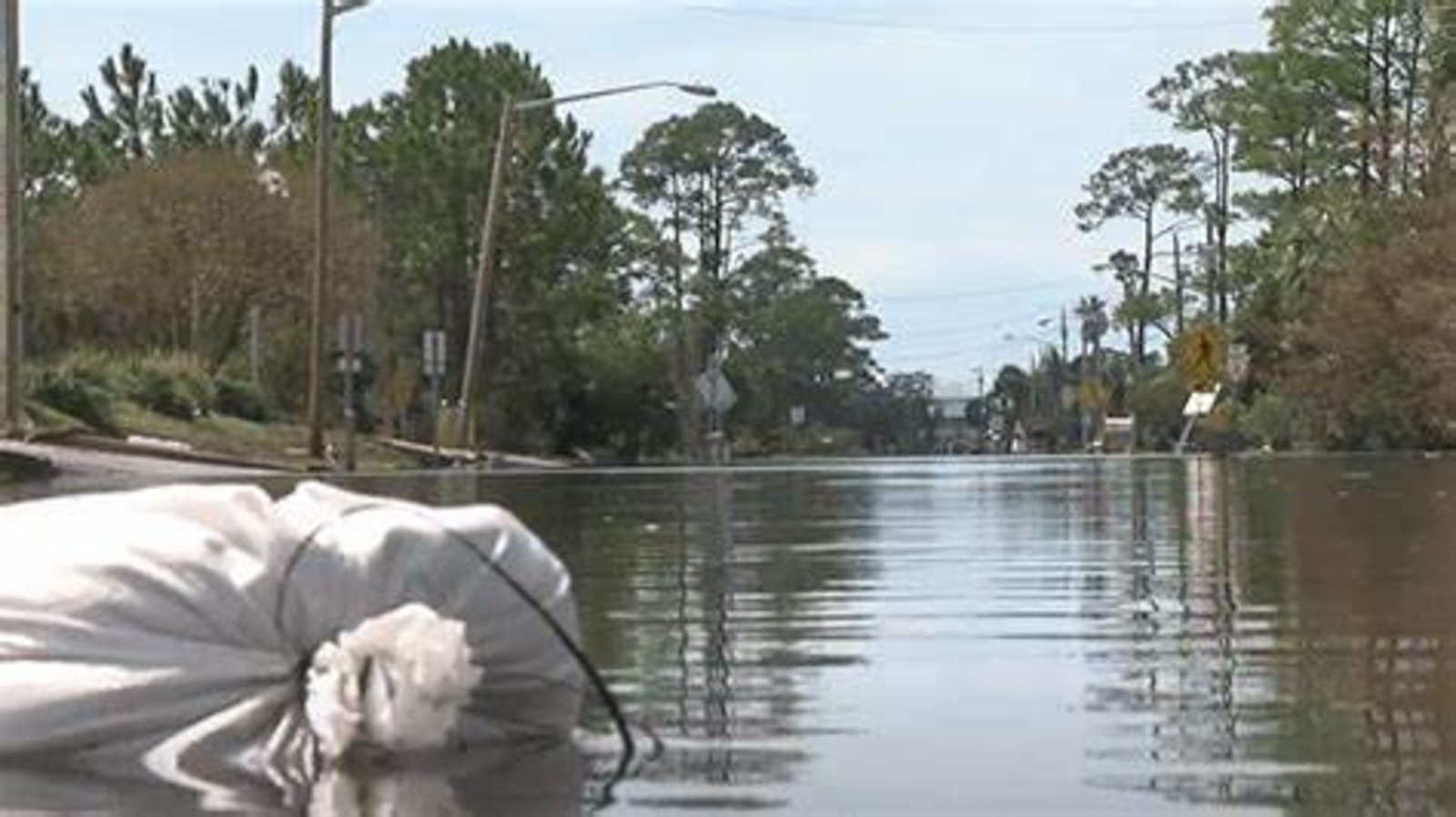
7 Critical Tips for Coastal Flood Safety. Coastal Flood Advisory in Effect for Mobile and Baldwin Counties
Issued Advisory and Timeline
The National Weather Service has issued a coastal flood advisory for Mobile and Baldwin counties. This advisory, released early Wednesday at 3:10 a.m., is in effect from 6 p.m. Wednesday to 6 a.m. Thursday. The advisory predicts minor coastal flooding that may affect various areas. 7 Critical Tips for Coastal Flood Safety
Expected Flooding and Safety Precautions
The weather service warns of possible flooding in lots, parks, and some roads, though major road closures aren’t expected. They emphasize hazardous conditions for swimming and surfing. Rip currents may develop, posing a risk even for skilled swimmers. Beach erosion is likely to occur, along with localized flooding. Travelers should allow extra time, as some roads could be impassable.

Don’t drive through unknown water depths
Avoid bypassing barricades.
Protect properties in flood-prone areas by securing belongings.
How to React to Rip Currents
Swimming near lifeguards is recommended. The service advises swimmers caught in rip currents to remain calm and float. Instead, swim along the shoreline if possible.
Understanding Flood Alerts and Responses
The National Weather Service issues various flood alerts.
Flash Flood Warning: Immediate action is required. Flash floods are sudden and intense, occurring within minutes or hours. Move to higher ground without delay if you’re in a flood-prone zone.
Flood Warning: When ongoing flooding or imminent flooding is confirmed, a flood warning is issued. Immediate precautions are necessary.
Flood Advisory: Though less severe, this warns of potentially hazardous conditions. While not expected to reach warning levels, it’s essential to remain cautious.
Flood Watch: Flood conditions are possible. This alert doesn’t mean flooding will occur but signals the need for preparedness.
Essential Flood Safety Guidelines
Knowing how to respond during floods can be lifesaving. Floods can be sudden and severe, so knowing essential flood safety guidelines can be lifesaving. Awareness and quick action are critical during flooding events. Whether you’re at home or on the road, following safety protocols helps protect both people and property.
First, stay updated on weather alerts and warnings through local news channels or weather apps. Knowing when a flood watch or warning is issued allows you to act promptly. When flooding is likely, prepare an emergency kit that includes water, food, flashlights, batteries, medications, and first aid supplies.
Seek Higher Ground
Move to elevated areas if you live in flood-prone zones. For campers in low-lying spots, relocate immediately when heavy rainfall is forecasted.
Follow Evacuation Orders
Comply promptly if local officials advise evacuation. Secure your home and lock doors before leaving.
Disconnect Utilities and Appliances
When possible, turn off utilities and unplug appliances. This helps prevent electrical hazards during a flood.
Avoid Flooded Basements
Steer clear of flooded rooms with exposed outlets or wires. If water has reached outlets, electrical hazards are present, which can be life-threatening.
Evacuate Promptly for Safety
If you hear buzzing, crackling, or popping sounds, leave immediately. These signs indicate electrical risks in the water.
Do Not Walk Through Floodwaters
Walking through floodwater, even if shallow, is risky.
Seek High Ground if Trapped
If caught by rising waters, climb to the highest possible point. Call 911 for emergency assistance if unable to move safely.
Risks of Driving in Flood Conditions
Driving through flooded areas is highly discouraged.Only 12 inches of water is enough to float most cars. In extreme weather, it’s vital to remain alert, heed warnings, and prioritize safety over convenience.
Preparedness During Intense Rainfall
Periods of heavy rainfall heighten flooding risks, especially in low-lying areas. Avoid travel in affected areas to prevent hazardous encounters. Prioritize emergency alerts to stay informed of local weather developments.
Intense rainfall can quickly transform an area, especially in low-lying and flood-prone zones, making preparedness essential. When heavy rain is predicted, it’s crucial to plan and take proactive measures. Start by staying informed through weather alerts from reliable sources like the National Weather Service. These alerts offer real-time updates, providing critical information on flood risks, evacuation orders, and emergency road closures.
Before rain begins, evaluate your surroundings for vulnerabilities. Identify low areas around your property where water can accumulate. If possible, clear gutters and drains to prevent clogs that can lead to localized flooding. Sandbags may be useful if you live in a flood-prone area, as they can create temporary barriers against rising water.
Keep essential supplies on hand, such as drinking water, flashlights, batteries, and a first aid kit, in case power outages or evacuations become necessary. If you live in an area with frequent flood risks, an emergency bag with necessary items like important documents, medications, and spare clothing can be invaluable for a quick evacuation.
During intense rainfall, avoid unnecessary travel. Roads can become flooded rapidly, and even shallow water can hide debris or deep pockets. Do not attempt to drive through water-covered roads; just 12 inches of moving water can carry a car away. Instead, stay indoors, monitor local alerts, and be prepared to move to higher ground if conditions worsen.
If flooding occurs, avoid contact with floodwaters, which can carry contaminants and hidden dangers like submerged electrical lines. Prioritize safety by listening to local authorities, following evacuation orders if issued, and reaching out to emergency services if necessary. Being prepared for intense rainfall minimizes risks and ensures you’re ready to respond swiftly in a potentially dangerous situation.
Final Notes on Staying Informed
The National Weather Service’s Advance Local Weather Alerts uses advanced data and alerts to keep the public updated. Monitoring these alerts is essential for making informed decisions. Local advisories can provide timely updates on road conditions, closures, and evacuation routes.









